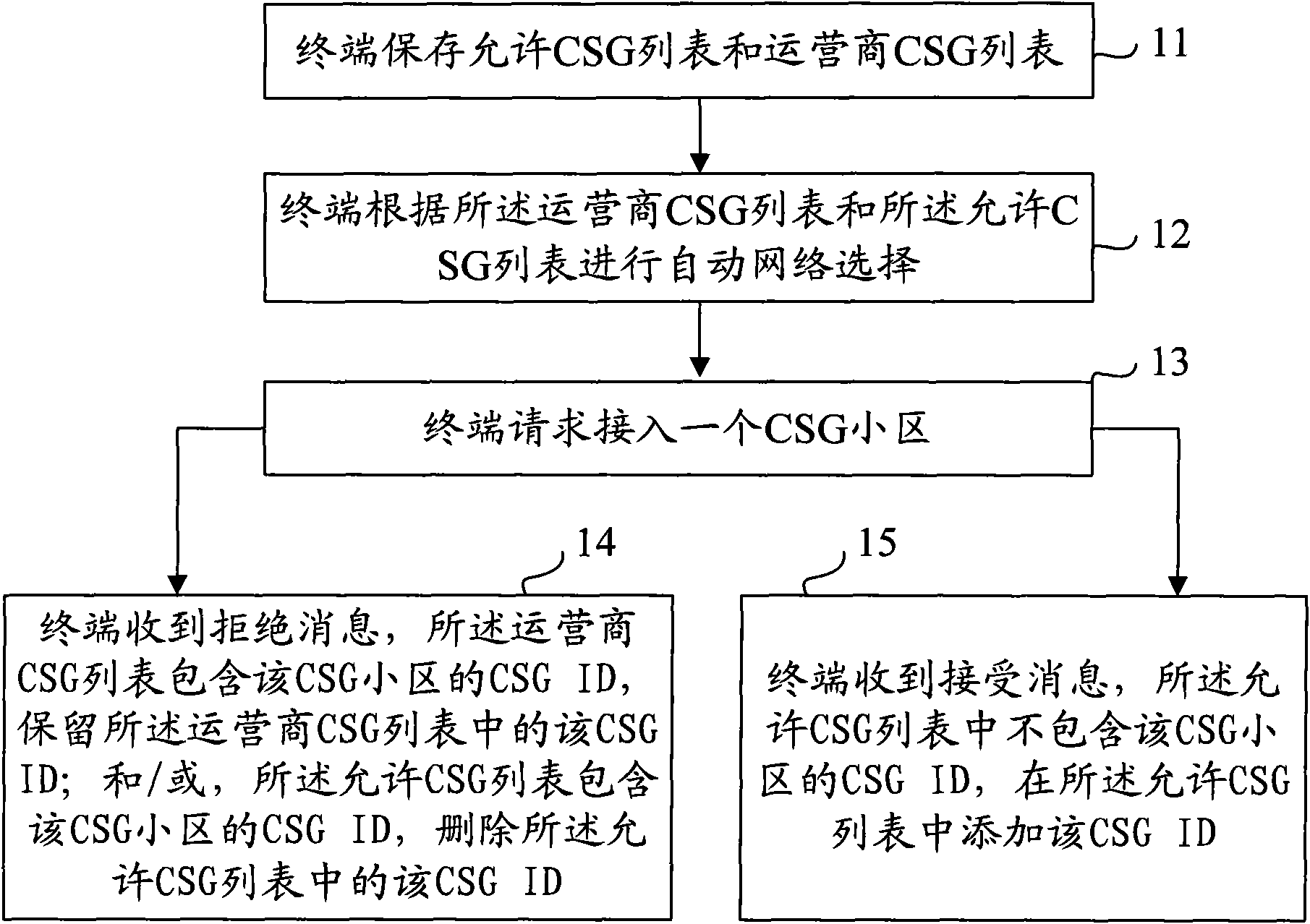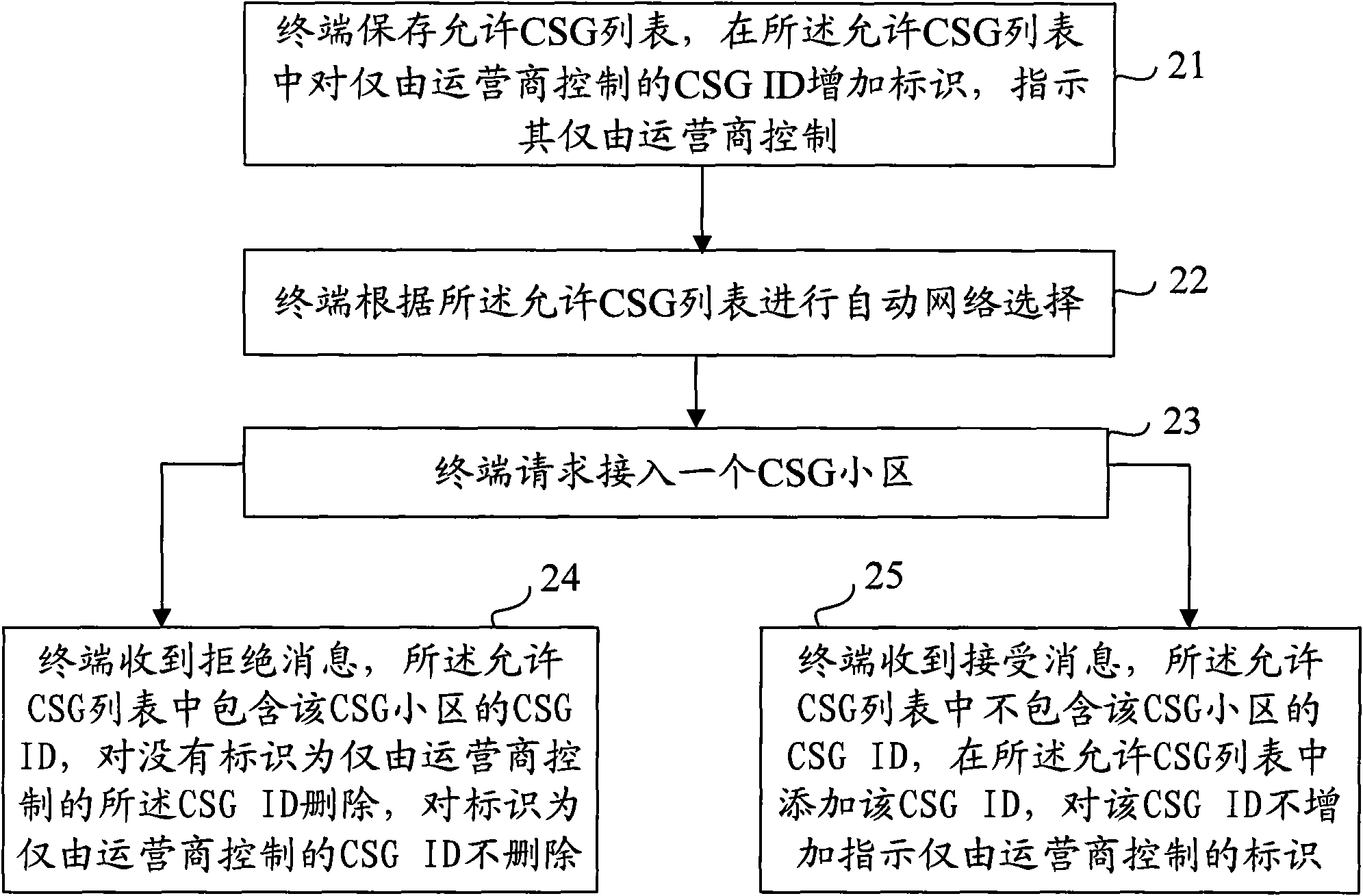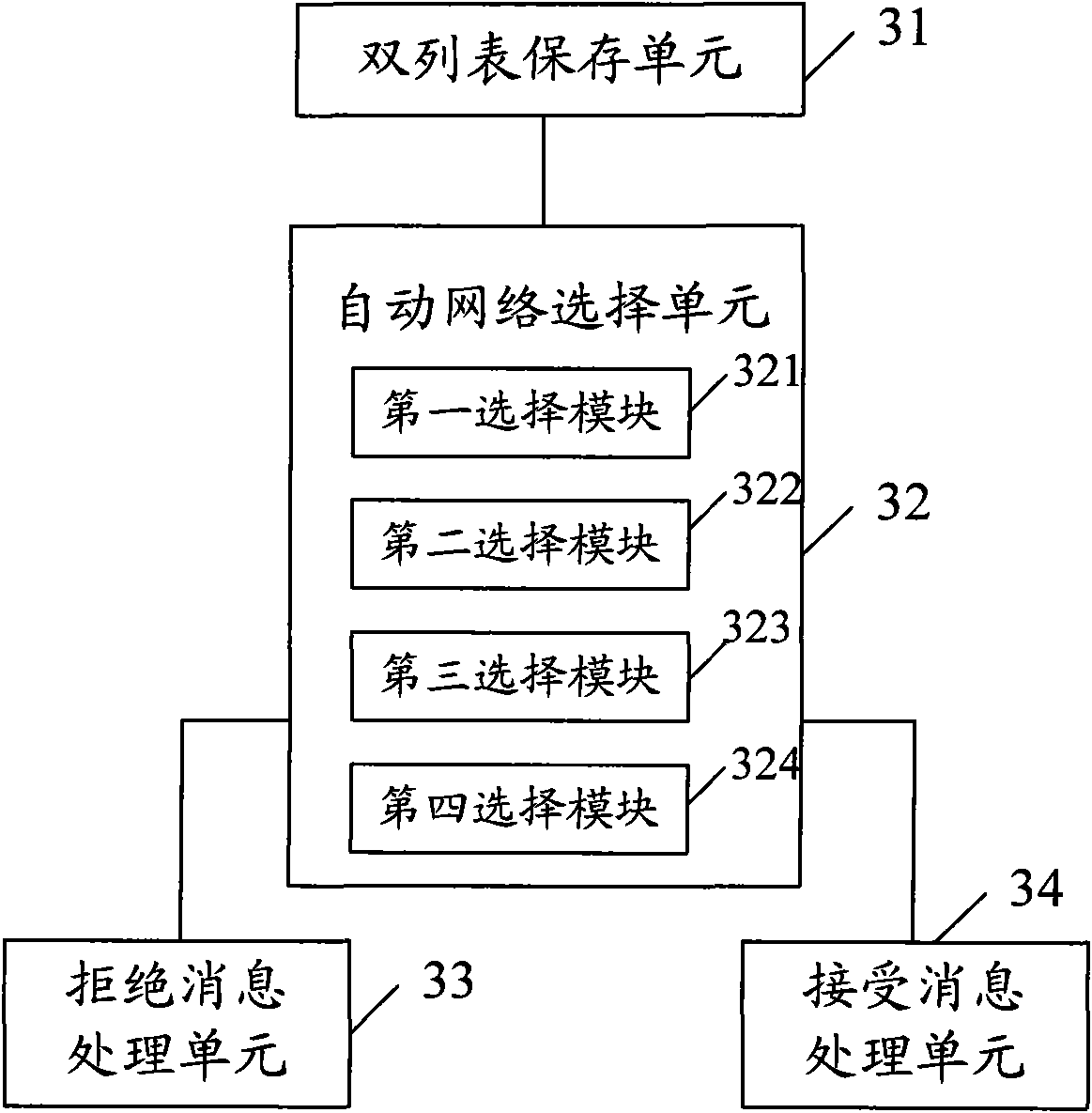Method and terminal for operator to control closed subscriber group list
A technology that closes user groups and operators, applied in the field of communications, and can solve problems such as the unavoidable CSGID update problem.
- Summary
- Abstract
- Description
- Claims
- Application Information
AI Technical Summary
Problems solved by technology
Method used
Image
Examples
Embodiment 1
[0079] The terminal and the network side respectively store two CSG lists, one allowed CSG list controllable by the user and the operator, and one operator CSG list controllable only by the operator.
[0080] When the terminal receives the command to delete the CSG ID under the operator's CSG list, it prompts that it cannot be changed, or the terminal does not display the operator's CSG list, so as to prevent the user from changing it.
[0081] The terminal performs automatic network selection according to the operator CSG list and the allowed CSG list, and the specific scheme is as follows:
[0082] The terminal sequentially performs automatic network selection on the CSG IDs in the operator CSG list and the allowed CSG list, or the terminal performs automatic network selection on the CSG IDs in the allowed CSG list and the operator CSG list in sequence.
[0083] When a terminal accesses a CSG cell, if it receives a NAS rejection message and the error code is #25, the specifi...
Embodiment 2
[0094] The terminal and the network side respectively store two CSG lists, one allowed CSG list controllable by the user and the operator, and one operator CSG list controllable only by the operator.
[0095] When the terminal receives the command to delete the CSG ID under the operator's CSG list, it prompts that it cannot be changed, or the terminal does not display the operator's CSG list, so as to prevent the user from changing it.
[0096] The terminal performs automatic network selection according to the operator CSG list and the allowed CSG list, and the specific scheme is as follows:
[0097] The terminal combines the operator's CSG list and the CSG ID in the allowed CSG list to generate a merged CSG list. The method for generating the merged list may be that the terminal combines the CSG ID in the operator's CSG list with the CSG ID in the allowed CSG list. The CSG IDs that do not exist in the operator's CSG list are combined to generate a merged CSG list; then, accor...
Embodiment 3
[0108] The terminal and the network side respectively store two CSG lists, one allowed CSG list controllable by the user and the operator, and one operator CSG list controllable only by the operator.
[0109] When the terminal receives the command to delete the CSG ID under the operator's CSG list, it prompts that it cannot be changed, or the terminal does not display the operator's CSG list, so as to prevent the user from changing it.
[0110] The terminal performs automatic network selection according to the operator CSG list and the allowed CSG list, and the specific scheme is as follows:
[0111] The terminal generates an available operator CSG list, and according to the available operator CSG list and the allowed CSG list, sequentially performs automatic network selection for the CSG IDs in the list.
[0112] The process for the terminal to generate an available operator CSG list includes: the terminal acquires a CSG ID, and generates an available operator CSG list from t...
PUM
 Login to view more
Login to view more Abstract
Description
Claims
Application Information
 Login to view more
Login to view more - R&D Engineer
- R&D Manager
- IP Professional
- Industry Leading Data Capabilities
- Powerful AI technology
- Patent DNA Extraction
Browse by: Latest US Patents, China's latest patents, Technical Efficacy Thesaurus, Application Domain, Technology Topic.
© 2024 PatSnap. All rights reserved.Legal|Privacy policy|Modern Slavery Act Transparency Statement|Sitemap



